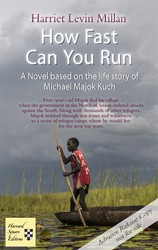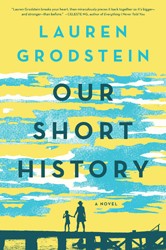Sarah Steinway, seventy-five years old, is a survivor of the catastrophic Emperor Floods that covered the Pacific coast cities and erased the boundaries of the San Francisco Bay, leaving no dry shore until New Mexico. With a manual typewriter, in her treehouse perch above the black waters of the former San Francisco Bay, she describes her experiences for future readers (if there are any). She writes of death, beauty, and savagery (there is an unforgettable scene of a vicious battle between shorebirds). She meets several interesting survivors who arrive at her treehouse, including two rabbis. And she starts to think about God and turns to the Torah.
As with most dystopian novels, the reader is anxious to know the cause of the killing catastrophe. Apparently, at first, the water level increases of an inch or two every other week were barely noticed. The people were told it was ‘fake news’ and that reports of rising waters were false, going against visual evidence; most people complied. Periodic high tides and flooding suddenly became the Emperor Floods that drowned all before it and never receded.
This is a very Jewish novel. Sarah provides midrashim (commentary) on the Torah. We are treated to an interview with Noah’s wife, an explanation as to why Pharaoh’s daughter drew Moses out of the Nile, and a return to Noah and God’s promise to never again flood the world. Quotes from Pirkei Avot head each chapter. Aside from these formal efforts, Jewish references crop up frequently. Sarah writes lovingly about her husband Daniel, her bashert. She recognizes a congruence with Sarah in the Torah, who laughed when told she would give birth at ninety, while Sarah Steinway births a treehouse at seventy-five. And Sarah Steinway says she will not be edited out, like Noah’s wife and Sarah. Oddly, many of the people Sarah meets before and during the flood are Jewish; drowned Marin County might be a shtetl given its density of Jews.
One element in the novel is particularly perplexing. Sarah has several opportunities to go to higher ground in New Mexico – to “choose life” rather than bear survival. She chooses to remain in her treehouse, close to her greatest love, her Taliesin house, designed by a student of Frank Lloyd Wright. Her love for the house is woven into her love for her late husband, Daniel. In the Acknowledgements, Mary Carter describes the novel as a love letter to her Taliesin home. Proximity to a drowned house seems like a poor trade-off for years of solitude and deprivation above a catastrophic flood. Perhaps one has to love a house deeply to understand.





